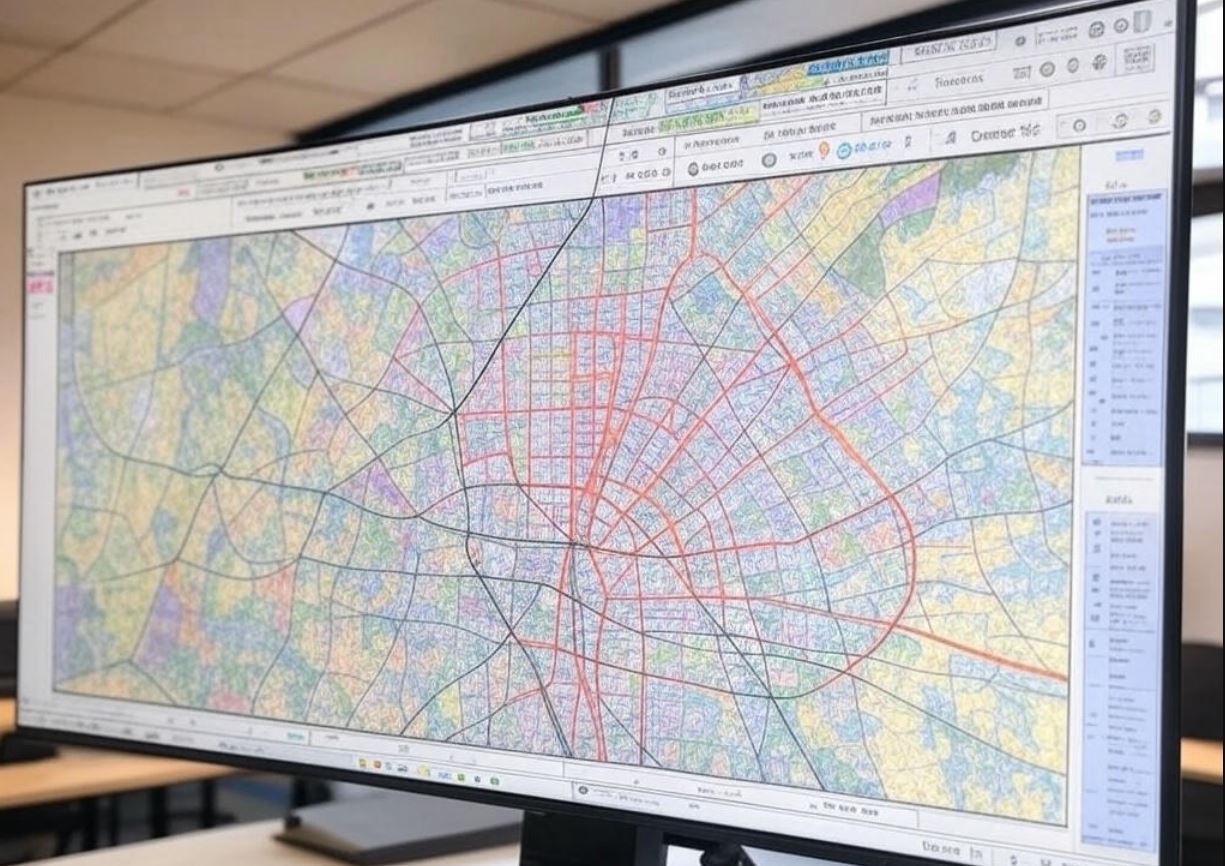As remote and hybrid work models continue to dominate in 2025, setting up a reliable and secure home office network has become essential for professionals, freelancers, and small business owners. With the rise of cyber threats, as highlighted by the NSA’s recent warning to Apple and Android users, and the increasing reliance on cloud-based tools, a well-configured network is no longer a luxury—it’s a necessity. This 1200-word blog post will guide you through the process of creating a home office network that’s fast, secure, and tailored to your needs in 2025. From choosing the right hardware to implementing Zero-Trust Security principles, we’ve got you covered.
Why a Home Office Network Matters in 2025
The shift to remote work, accelerated by the COVID-19 pandemic, has become a permanent fixture for many. As of April 2, 2025, companies are increasingly adopting hybrid models, with employees splitting time between home and office. This means your home network isn’t just for casual browsing anymore—it’s a critical hub for video conferencing, cloud collaboration, and sensitive data transfers. A poorly configured network can lead to slow speeds, dropped connections, and, worse, security breaches. The NSA’s recent advisory, reported by The Sun, underscores the risks of unsecured networks, especially when using public Wi-Fi or outdated devices. A robust home office network ensures productivity, security, and peace of mind.
Step 1: Assess Your Needs and Plan Your Network
Before diving into hardware purchases, take stock of your requirements. How many devices will connect to your network? A typical home office might include a laptop, a smartphone, a printer, a smart speaker, and IoT devices like a security camera. If you’re a graphic designer or video editor, you’ll need higher bandwidth for large file transfers. If you’re in a data-sensitive role, security will be your top priority.
Next, map out your space. The size of your home and the location of your office will influence your setup. For example, a multi-story house may require a mesh Wi-Fi system to ensure coverage, while a small apartment might only need a single router. Consider potential sources of interference, like thick walls or neighboring networks, which can degrade signal quality.
Step 2: Choose the Right Hardware
In 2025, networking hardware has evolved to meet the demands of remote work. Here’s what you’ll need:
- Router: Invest in a Wi-Fi 6 or Wi-Fi 6E router for faster speeds and better handling of multiple devices. Brands like Netgear and TP-Link offer models with advanced features like MU-MIMO (Multi-User, Multiple-Input, Multiple-Output), which ensures smooth performance during Zoom calls and file uploads. Look for routers with built-in security features, such as automatic firmware updates and VPN support.
- Modem: If your internet service provider (ISP) didn’t provide a modem, buy one compatible with your plan. A DOCSIS 3.1 modem is ideal for gigabit speeds, which are increasingly common in 2025.
- Mesh Wi-Fi System (Optional): For larger homes, a mesh system like Google Nest Wi-Fi or Eero Pro 6 extends coverage by creating a seamless network with multiple access points. These systems are easy to set up and manage via smartphone apps.
- Network Switch (Optional): If you have multiple wired devices, such as a desktop PC and a NAS (Network-Attached Storage), a gigabit Ethernet switch can expand your router’s ports.
- Powerline Adapters (Optional): For areas with poor Wi-Fi coverage, powerline adapters use your home’s electrical wiring to extend your network. Brands like TP-Link offer reliable options.
Step 3: Set Up Your Internet Connection
Start by connecting your modem to your ISP’s service line (e.g., cable or fiber). Plug in the modem, wait for it to sync (usually indicated by a solid light), and connect it to your router via an Ethernet cable. Power on the router and follow the manufacturer’s setup instructions, typically through a mobile app or web interface.
Choose a strong Wi-Fi password—use a mix of letters, numbers, and symbols, and avoid easily guessable phrases like “password123.” In 2025, routers often support WPA3 encryption, the latest security standard. Enable it to protect against brute-force attacks. If your router doesn’t support WPA3, WPA2 is still secure but less future-proof.
Step 4: Optimize Your Wi-Fi Performance
Position your router centrally, elevated, and away from obstructions like walls or metal objects. In 2025, many routers come with beamforming technology, which directs Wi-Fi signals toward your devices, but placement still matters. If you’re using a mesh system, place the nodes strategically to cover dead zones.
Split your Wi-Fi into 2.4 GHz and 5 GHz bands (or 6 GHz if using Wi-Fi 6E). The 2.4 GHz band offers better range but slower speeds, ideal for IoT devices, while the 5 GHz and 6 GHz bands provide faster speeds for laptops and smartphones. Give each band a unique name (e.g., “HomeOffice_5G” and “HomeOffice_2.4G”) to avoid confusion.
Use your router’s app to run a channel scan and select the least congested channel. In crowded areas, overlapping Wi-Fi signals from neighbors can cause interference. Tools like NetSpot or Wi-Fi Analyzer can help identify the best channels.
Step 5: Secure Your Network with Zero-Trust Principles
Drawing from the Zero-Trust Security framework, apply the “never trust, always verify” mindset to your home network. Start by enabling a guest network for visitors or less-trusted devices, like smart TVs, to keep them isolated from your main network. Set a separate password for the guest network.
Implement strong access controls. Many 2025 routers support device-specific access rules, allowing you to block unknown devices from connecting. Enable MAC address filtering to only allow approved devices, though this can be bypassed by skilled attackers, so it’s not a standalone solution.
Use a VPN for sensitive tasks, such as accessing work servers. Services like NordVPN or ExpressVPN encrypt your traffic, protecting you from man-in-the-middle attacks, especially if you occasionally work from public Wi-Fi. Some routers, like those from Asus, have built-in VPN servers, allowing you to securely access your home network remotely.
Regularly update your router’s firmware. The NSA’s warning highlights the risks of unpatched devices, as hackers can exploit known vulnerabilities. Most modern routers can auto-update, but check manually every few months to be safe.
Step 6: Add Advanced Features for Productivity
In 2025, home office networks can do more than just provide internet access. Consider these enhancements:
- Quality of Service (QoS): Use your router’s QoS settings to prioritize bandwidth for work-related tasks, like video calls, over less critical activities, like streaming. This ensures a lag-free experience during important meetings.
- Network-Attached Storage (NAS): A NAS device, like the Synology DS224+, lets you store and access files locally, reducing reliance on cloud services. It’s ideal for backups and sharing large files within your household.
- Smart Home Integration: If you use smart devices, ensure they’re on a separate VLAN or the guest network to prevent them from becoming entry points for attackers. Routers like the Ubiquiti Dream Machine support VLANs for advanced segmentation.
Step 7: Test and Monitor Your Network
Once your network is set up, test its performance. Use tools like Speedtest.net to check your upload and download speeds, ensuring they match your ISP’s promised rates. If speeds are slow, troubleshoot by rebooting your modem and router, checking for interference, or contacting your ISP.
Monitor your network for unusual activity. Many routers in 2025 come with built-in security dashboards that alert you to new devices or suspicious traffic. For more advanced monitoring, consider a tool like Fing, which scans your network and identifies connected devices.
Final Thoughts
Setting up a home office network in 2025 is about balancing speed, security, and scalability. By choosing the right hardware, optimizing your Wi-Fi, and applying Zero-Trust Security principles, you can create a network that supports your work-from-home needs while keeping cyber threats at bay. As remote work continues to evolve, a well-designed network isn’t just a tool—it’s a foundation for productivity and peace of mind. Take the time to set it up right, and you’ll be ready to tackle whatever 2025 throws your way.



